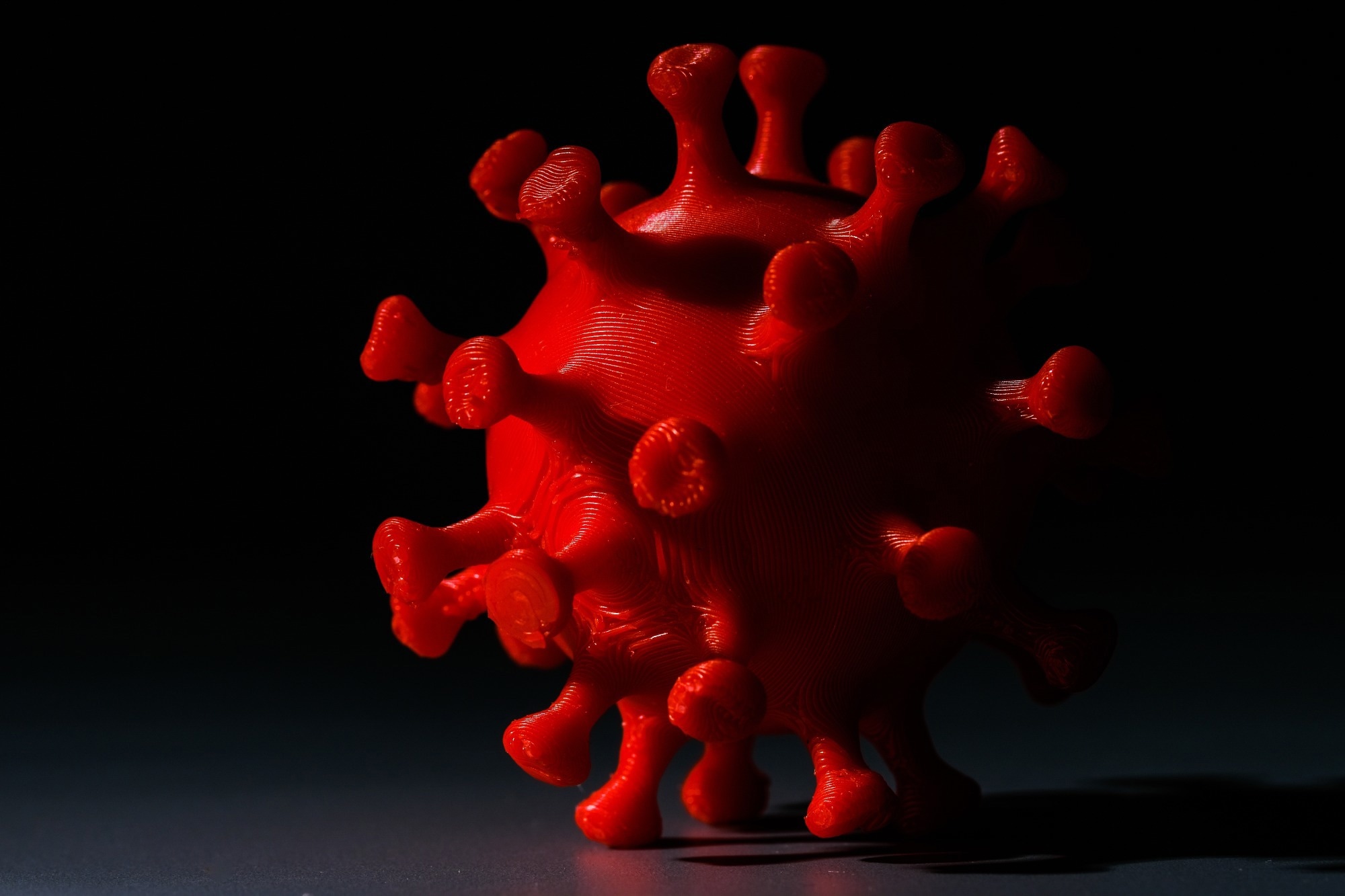The ongoing coronavirus disease 2019 (COVID-19) pandemic, caused by the rapid outbreak of severe acute respiratory syndrome coronavirus 2 (SARS-CoV-2), has claimed more than 6.92 million lives worldwide.
 Study: Macrophage ACE2 is necessary for SARS-CoV-2 replication and subsequent cytokine responses that restrict continued virion release. Image Credit: Najmi Arif / Shutterstock.com
Study: Macrophage ACE2 is necessary for SARS-CoV-2 replication and subsequent cytokine responses that restrict continued virion release. Image Credit: Najmi Arif / Shutterstock.com
Background
SARS-CoV-2 is a single-stranded, enveloped, positive-sense ribonucleic acid (RNA) virus that belongs to the family Coronaviridae. The SARS-CoV-2 spike (S) protein infects host epithelial cells by binding to the angiotensin-converting enzyme 2 (ACE2) and subsequently fusing the membranes. Some SARS-CoV-2 variants, such as Omicron, also infect the host cell through the endocytic pathway.
The underlying mechanisms of the SARS-CoV-2 replication cycle have been elucidated using various epithelial cell lines. However, the mechanistic differences when SARS-CoV-2 infects other cell types, such as macrophage populations, are poorly understood.
Previous studies have indicated that severe SARS-CoV-2 infection results from the lack of early host-interferon signaling to control the virus and subsequent intense proinflammatory responses that cause tissue damage. Generally, after SARS-CoV-2 infects the epithelial cells of the respiratory tract, antiviral and proinflammatory cytokines are released. During severe infection, macrophages have been identified to be the key source of proinflammatory cytokines.
Macrophages are associated with innate immunity that protects the respiratory tracts during viral infection. In contrast to epithelial cells, human macrophages manifest an abortive replication cycle for many viruses, such as rhinovirus and seasonal influenza A viruses.
However, macrophages support the early phase of viral infection, particularly the entry and synthesis of new viral RNA and protein. Thus, macrophages not only inhibit viral dissemination but can sense infected cells and infectious viral particles to subsequently elicit antiviral and proinflammatory programs.
Based on the findings of single-cell RNA sequencing (scRNA-seq), viral RNA has been detected within macrophages in lung tissue and bronchoalveolar lavage (BAL) fluid from COVID-19 patients. Immunostaining of autopsied lungs of individuals with COVID-19 revealed the presence of viral antigens such as S and RNA-dependent RNA polymerase (RdRp) in macrophages.
Not many studies have determined how SARS-CoV-2 enters macrophages. Furthermore, it remains unclear whether this virus replicates within macrophages to synthesize new viral RNA and protein, which leads to the possibility of new virion assembly.
About the study
A new Science Signaling study evaluates whether macrophage ACE2 expression regulates the susceptibility of macrophages against SARS-CoV-2 entry and replication. In this study, lung scRNA-seq datasets associated with COVID-19 patients and control individuals were re-analyzed.
Researchers in Australia investigated the cell type that can effectively sense SARS-CoV-2 and trigger the release of antiviral and inflammatory cytokine mediators. Here, ACE2 was identified to be the key determinant of macrophage susceptibility to COVID-19 infection and sensing of the virus.
Study findings
Since human monocyte-derived macrophages (HMDMs) do not express ACE2, these cells were used as in vitro models for ACE2-negative macrophages.
Even though HMDMs phagocytosed the virus, they did not allow early-phase viral replication or protein synthesis to induce inflammatory responses due to the absence of ACE2. Nevertheless, THP-1 macrophages that were ectopically engineered to express ACE2 supported SARS-CoV-2 entry, replication, and new virion release.
ACE2-expressing THP-1 macrophages were able to sense newly synthesized viral RNA and trigger the expression of proinflammatory and antiviral mediators, which inhibited ongoing virion release. Consistent with previous in vitro studies, the current study revealed that SARS-CoV-2 did not replicate in BAL macrophages or HMDM.
Virions were detected within phagosomes, which suggests that SARS-CoV-2 virions can invade the macrophage phagolysosomal system. Despite this finding, the authors proposed that SARS-CoV-2 fails to enter the HMDM cytoplasm because the S protein fails to undergo the necessary conformational changes required for membrane fusion in the absence of ACE2.
ACE2 expression or SARS-CoV-2 infection of BAL macrophages was not detected. However, this observation does not reflect the function of BAL macrophages in individuals with diverse disease statuses or genetic polymorphisms.
Conclusions
One of the key limitations of this study is that it only discussed how ACE2-positive macrophages sense SARS-CoV-2 through the ectopic expression of ACE2 in THP-1 macrophages.
However, it remains imperative to detect the macrophage-specific pathways that regulate ACE2 expression and function. This information will help future in vitro studies to understand how SARs-CoV-2 interacts with macrophages that endogenously express ACE2. Such studies will also provide greater insight into how ACE2-positive macrophages can be identified and targeted.
The current study suggests that ACE2-negative macrophages do not support SARS-CoV-2 entry and the early stages of replication. ACE2-overexpressing THP-1 macrophages were susceptible to early stages of SARS-CoV-2 infection; however, these cells induced the production of antiviral and proinflammatory agents that inhibited the synthesis of infectious virions.
Journal reference:
- Labzin, I. L., Chew, K. Y., Eschike, K., et al. (2023) Macrophage ACE2 is necessary for SARS-CoV-2 replication and subsequent cytokine responses that restrict continued virion release. Science Signaling 16. doi:10.1126/scisignal.abq1366